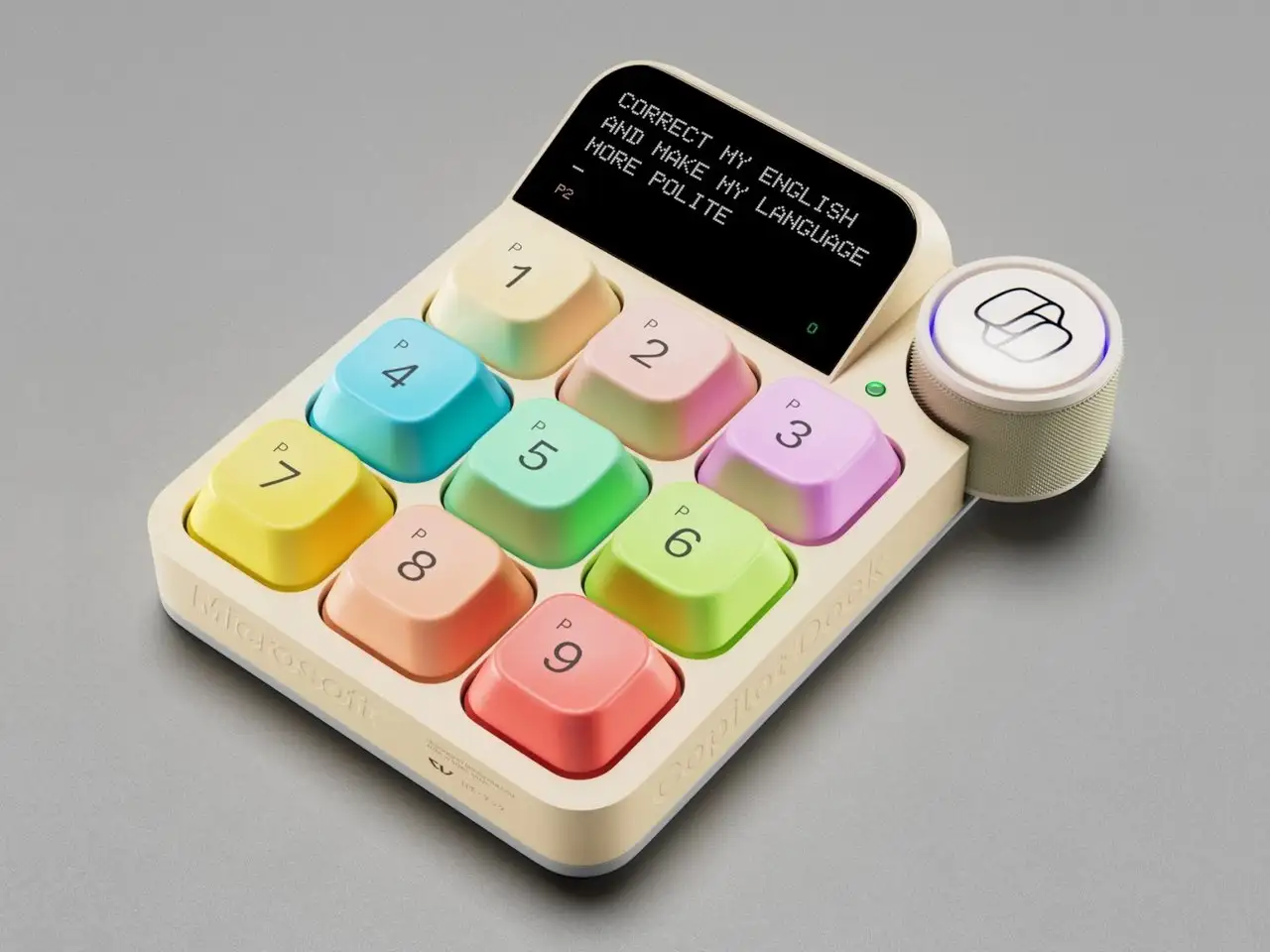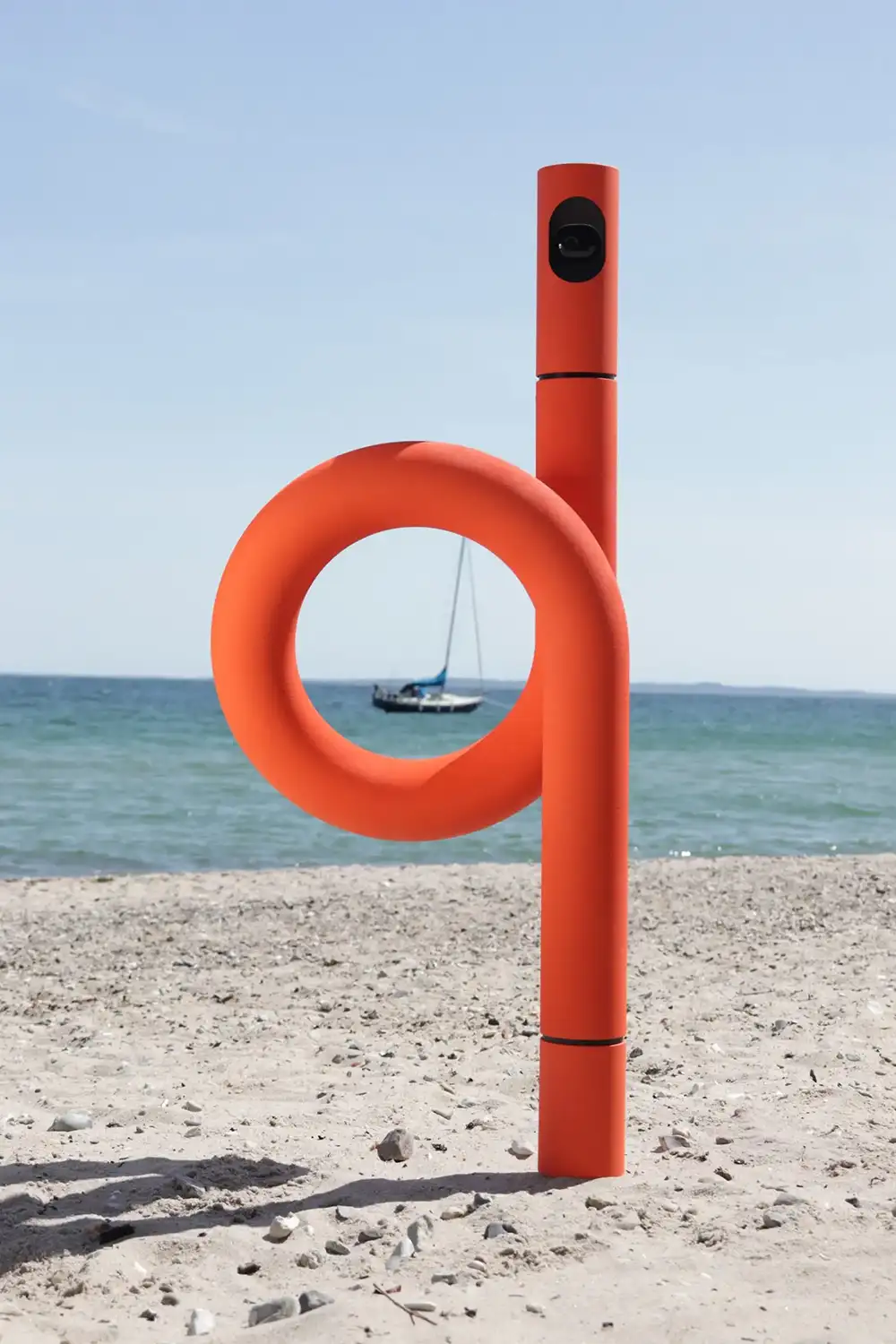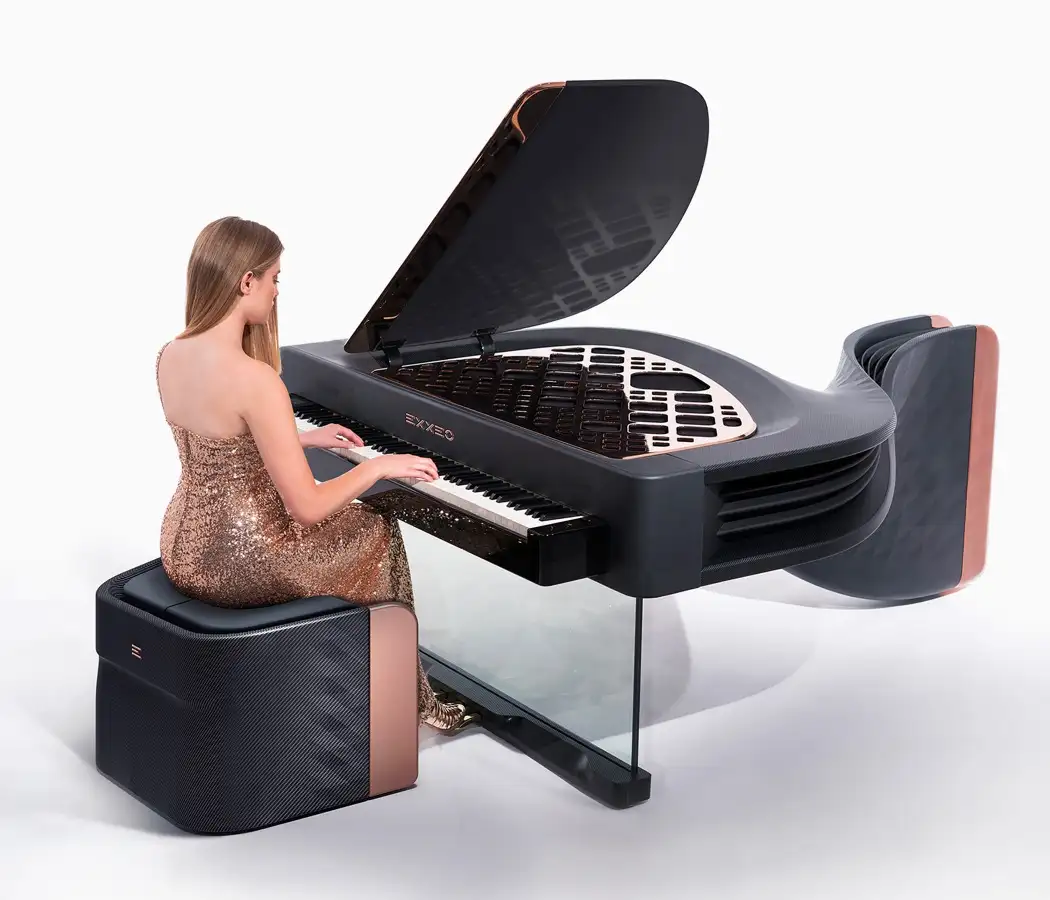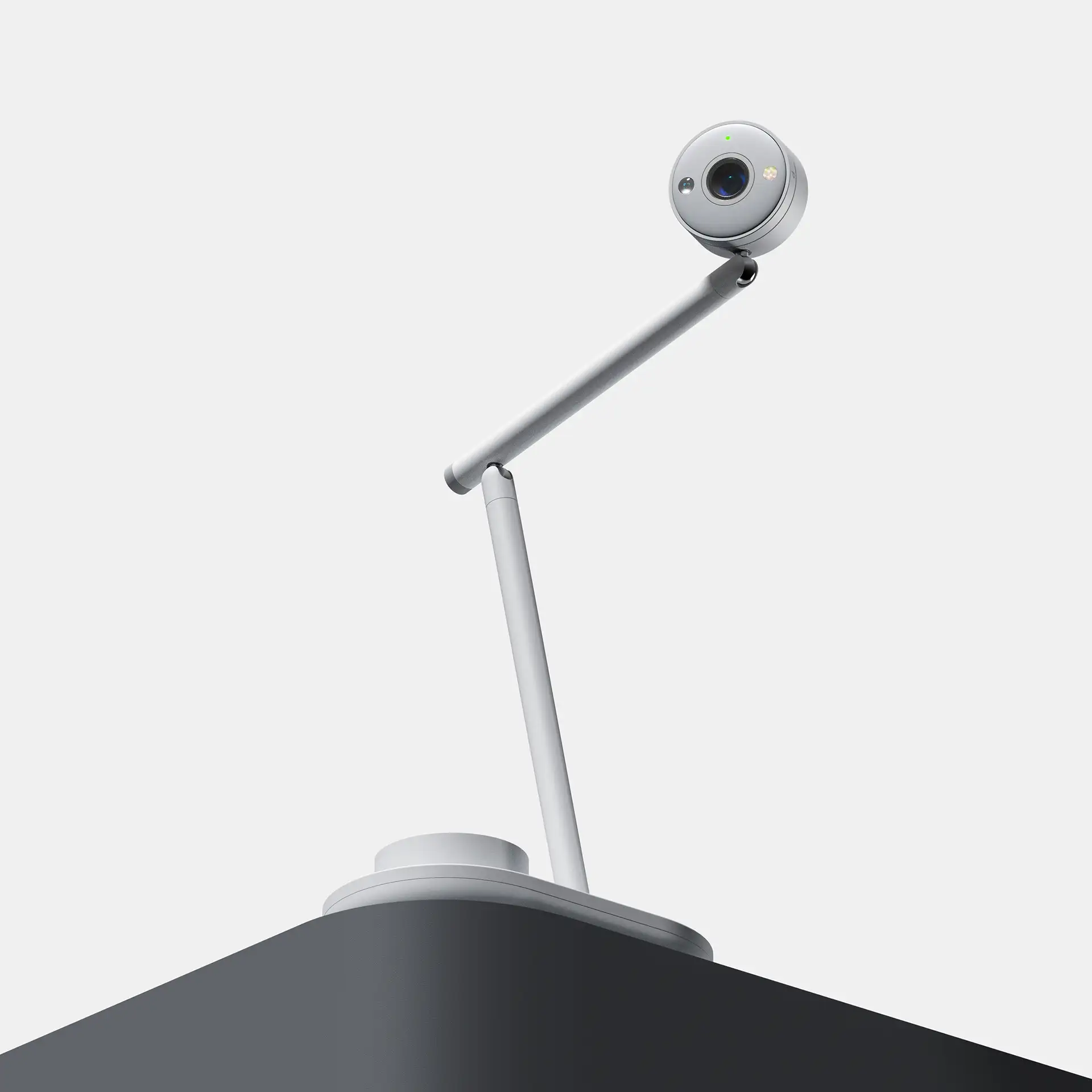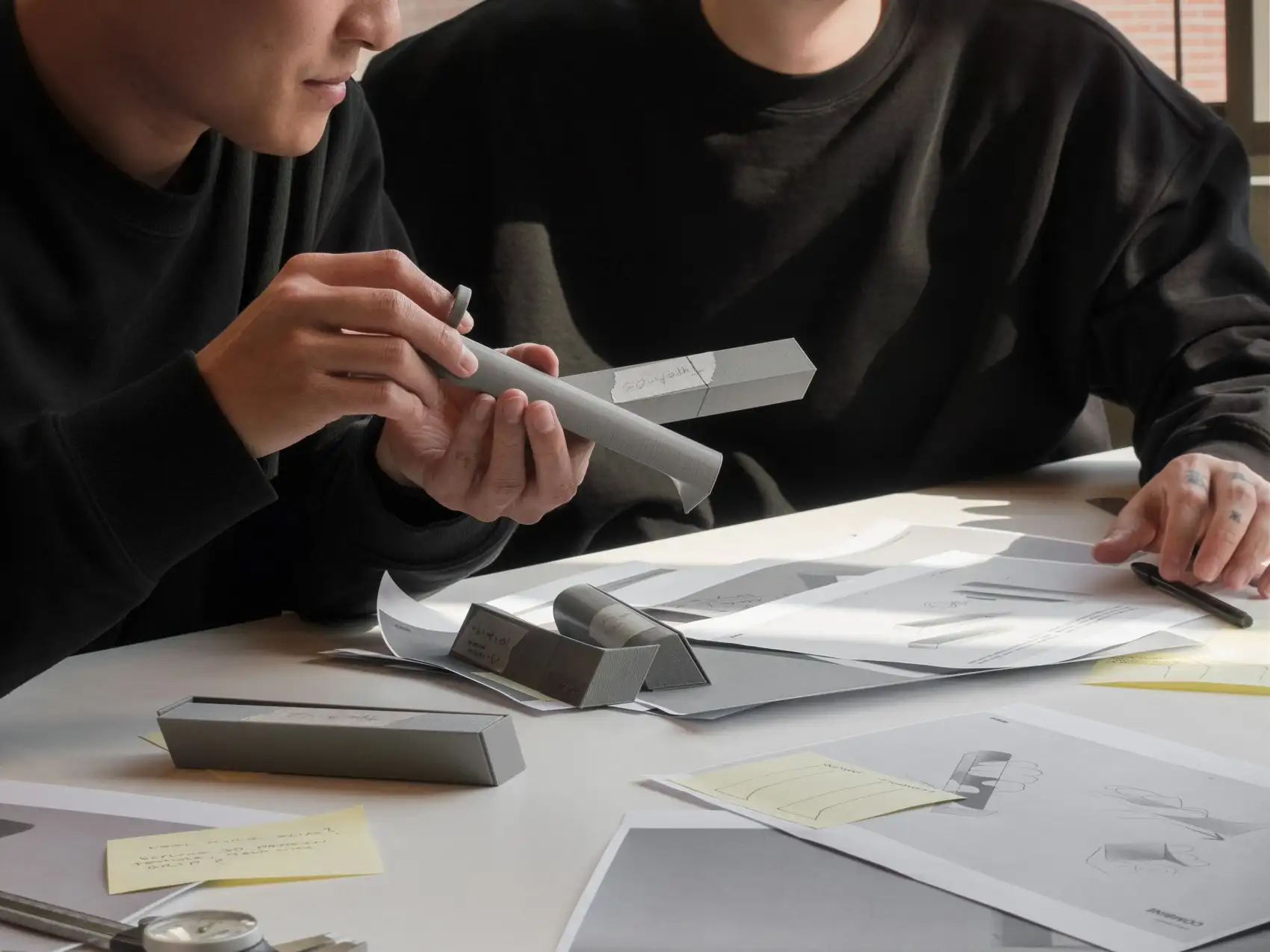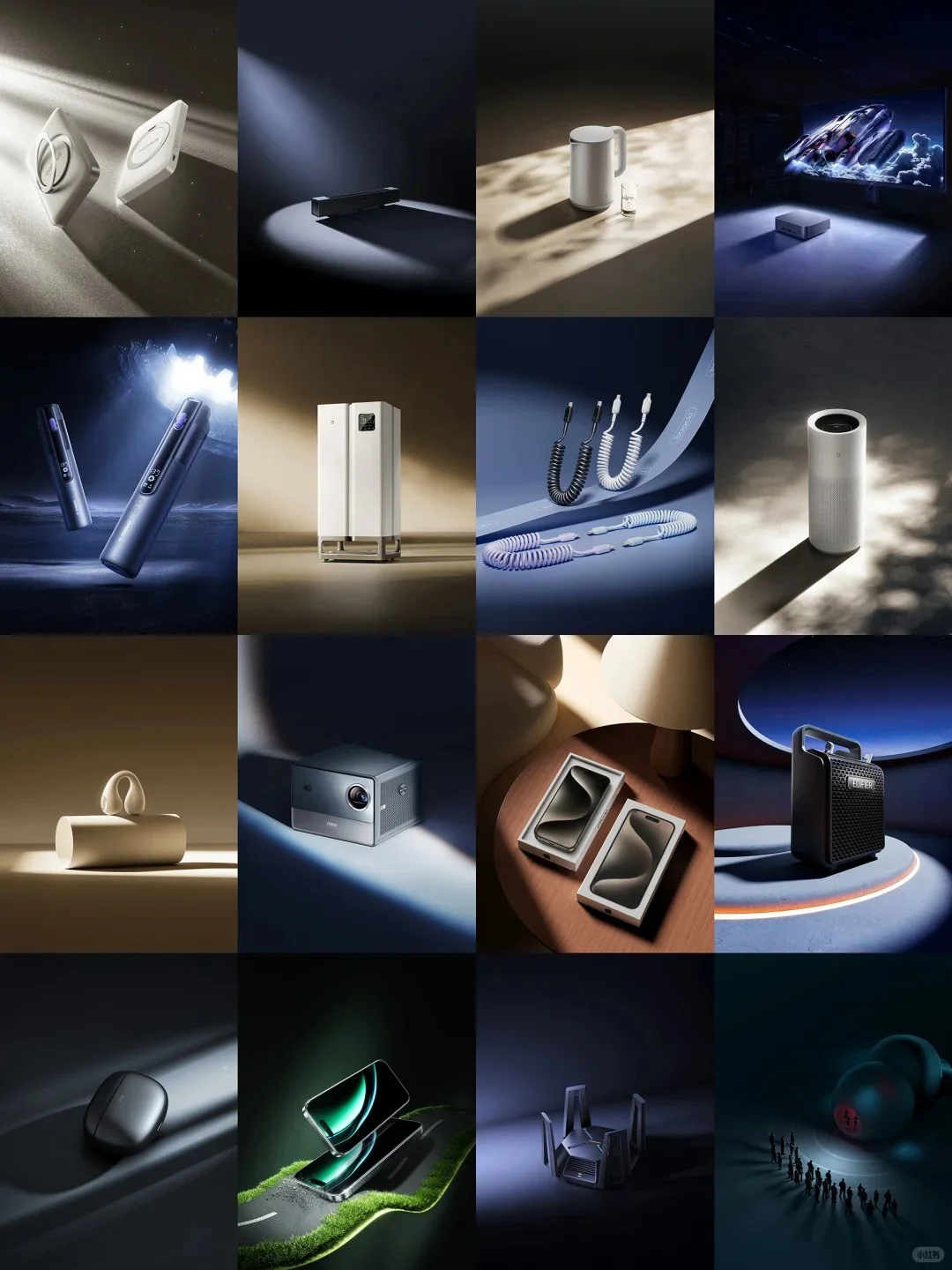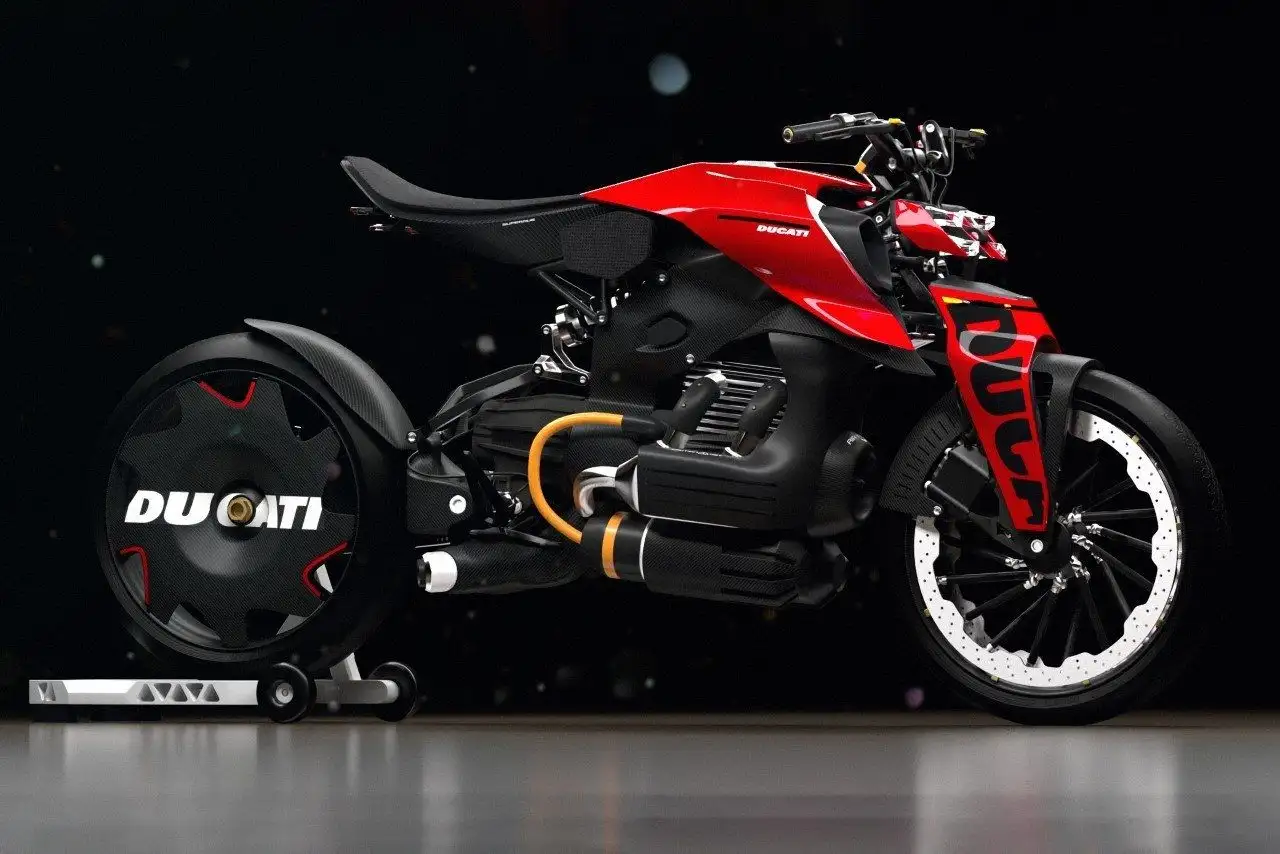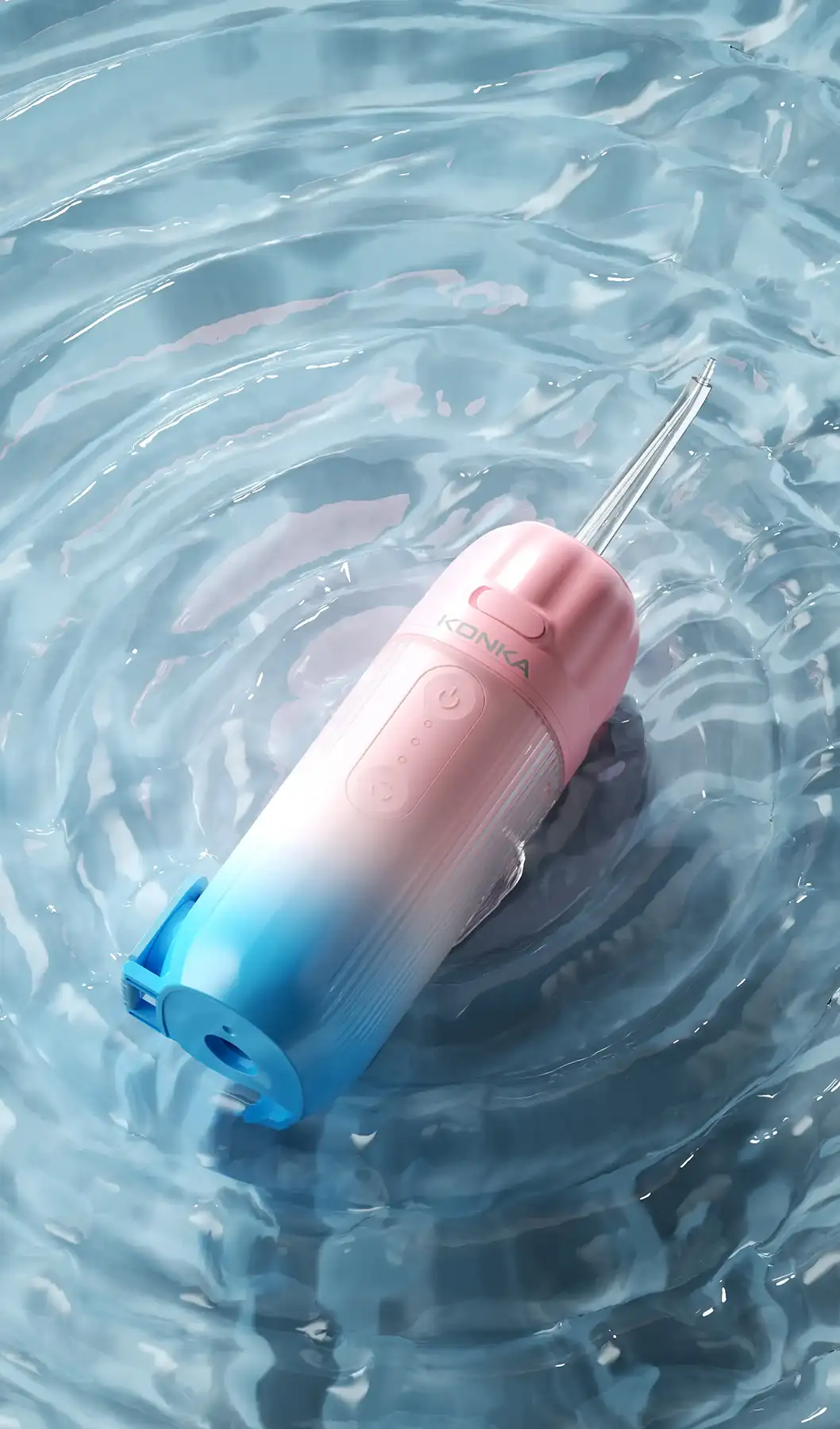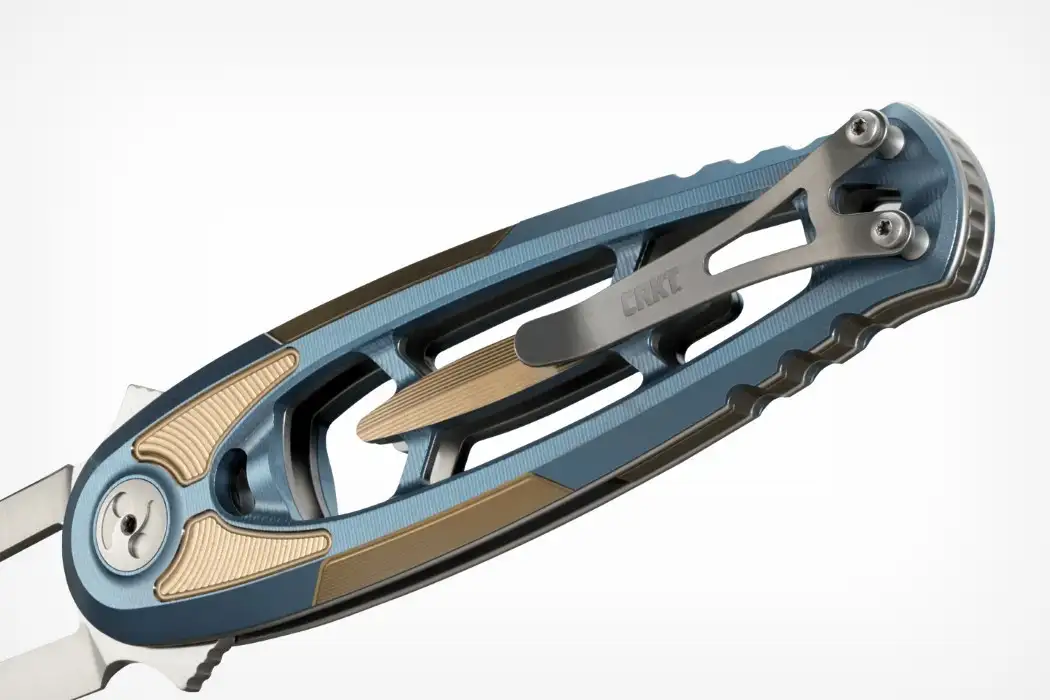NINEIDEA:设计公司在向客户展示工业设计案例时,这不仅仅是一个简单的“作品秀”,而是一次至关重要的战略沟通,目的是建立信任、展示专业、并最终赢得项目。以下是需要注意的工业设计案例展示核心要点,可以分为展示前、展示中、展示后三个阶段。
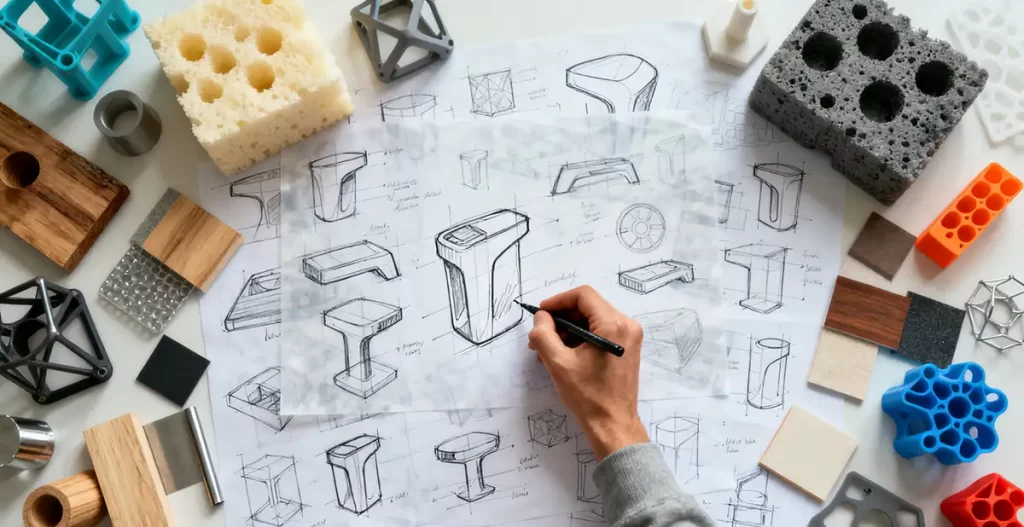
一、 展示前:精心策划与准备
1. 深度理解客户,精准筛选案例:
- 拒绝“一套PPT打天下”:在展示前,尽可能了解潜在客户的行业、产品类型、面临的挑战(是成本控制、用户体验提升还是技术整合?)。
- 案例相关性优先:选择与客户行业、产品复杂度或设计挑战最相关的案例。展示一个医疗器械案例给消费电子客户,其说服力远不如一个成功的智能硬件案例。
- 展示多样性(可选):如果客户背景不明,可以准备2-3个不同领域的代表性案例,但一定要点明每个案例与客户潜在需求的共通点。
2. 构建故事线,而非堆砌图片:
- 每个案例都是一个故事:采用经典的“问题-解决-成果”结构。
- 背景与挑战:当时客户面临什么市场困境或技术难题?(例如:“客户需要一款能在家用和轻办公场景间无缝切换的耳机。”)
- 我们的设计策略:我们是如何思考并定义解决方案的?(例如:“我们提出了‘无缝切换’的核心概念,通过XX结构实现佩戴舒适性和信号稳定性。”)
- 设计深化过程:展示草图、概念发散、手板模型、用户测试等关键节点。这能体现专业度和严谨性。
- 最终设计方案:呈现高质量的产品渲染图、多角度视图、爆炸图、关键细节特写。
- 成果与影响:最终产品带来了什么价值?最好有量化数据,如“上市后销量提升30%”、“获得Red Dot设计奖”等。如果数据敏感,可以描述市场积极反馈。
3. 视觉材料精益求精:
- 高质量视觉:使用高分辨率的图片、专业的渲染图、简洁明了的视频动画。模糊或不专业的视觉材料会直接拉低公司形象。
- 统一的视觉风格:PPT或Keynote的版式、字体、配色应体现公司品牌调性,保持专业和一致。
- 实体模型(手板)展示:如果条件允许,带上相关案例的实体模型或最终产品。触感和实物质感是图片无法替代的,极具说服力。
4. 明确展示团队与分工:
- 提前确定主讲人、技术补充人员和项目负责人。主讲人需具备良好的沟通能力和感染力,能生动地讲述故事。

二、 展示中:专业沟通与互动
1. 以客户为中心,而非自我炫耀:
- 开场白很重要:首先简要介绍公司,但快速切入主题:“今天我们特意为您挑选了三个案例,我们觉得它们能很好地说明我们如何解决像您可能遇到的类似问题。”
- 聚焦“价值”而非“美学”:不要只说“这个造型很漂亮”,而要解释“这个流线型设计是为了降低风阻,提升能效”或“这个CMF(颜色、材料、工艺)选择是为了营造高端感,与竞品形成差异化”。
- 强调过程与方法论:客户购买的是你的专业能力,而不仅仅是最终那张图。详细解释用户研究、工程可行性分析、供应链对接等过程,这能建立极大的信任感。
2. 保持互动,引导客户思考:
- 提问与倾听:在展示过程中,适时提问:“您在开发过程中是否也遇到过类似的供应链问题?” 这能让客户参与进来,并让你了解他们的痛点。
- 观察客户反应:注意客户的肢体语言和表情,如果他们对某个环节特别感兴趣,可以多停留一会儿深入探讨。
- 坦诚面对挑战:不要只讲成功的一面。可以提及项目中遇到的困难以及如何解决的,这显得真实、可信,并展示了解决问题的能力。
3. 清晰阐述合作流程:
- 在案例展示后,用一页PPT清晰地说明一个典型项目的合作流程,例如:需求沟通 → 策略研究 → 概念设计 → 深化设计 → 工程支持 → 生产跟进。这让客户对未来的合作有清晰的预期。
4. 控制时间,突出重点:
- 严格遵守预约时间。精心准备的内容应在规定时间内讲完,留出充足时间给客户提问和讨论。
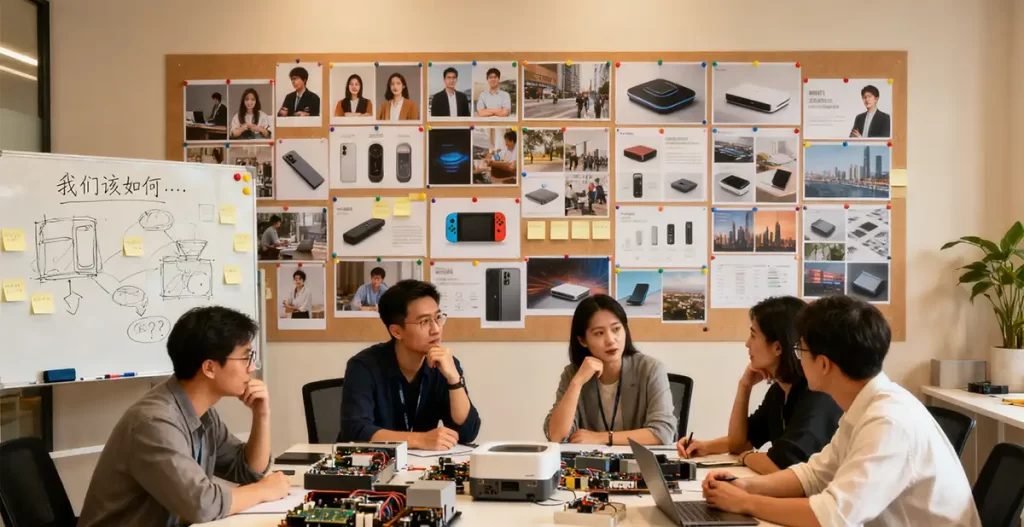
三、 展示后:持续跟进与价值延伸
1. 准备详细的案例资料包:
- 展示结束后,应准备一份精美的电子版案例集(可以是PDF或在线链接),包含展示的核心内容,方便客户内部传阅和决策。
2. 积极跟进与答疑:
- 在展示后24小时内发送感谢邮件,并附上资料包。针对客户在会议上提出的具体问题,进行补充回答。
- 主动询问下一步的安排,但不要过于急切。
3. 保护机密信息:
- 对于未公开的客户项目,务必确保已获得相关客户的许可才能进行展示。必要时,对敏感信息进行脱敏处理。
总结:要避免的常见误区
- 误区一:只讲结果,不讲过程 -> 正确做法:展示你的思考过程和专业方法论。
- 误区二:案例与客户无关 -> 正确做法:精心筛选,建立案例与客户需求的关联。
- 误区三:单向灌输,缺乏互动 -> 正确做法:将展示变成一场对话。
- 误区四:过度包装,显得浮夸 -> 正确做法:专业、自信、真诚。
- 误区五:忽视视觉细节 -> 正确做法:视觉材料代表公司品质,必须精益求精。
最终,成功的案例展示是一场价值主张的沟通。它要让客户清晰地看到:“选择我们,您将获得的不只是一个漂亮的设计,更是一个能解决实际问题、降低风险、提升市场竞争力的可靠合作伙伴。”
@NINEIDEA九号创新 www.nineidea.com
Industrial Design Case Presentation Guide: From Strategy to Execution, Winning Customer Trust
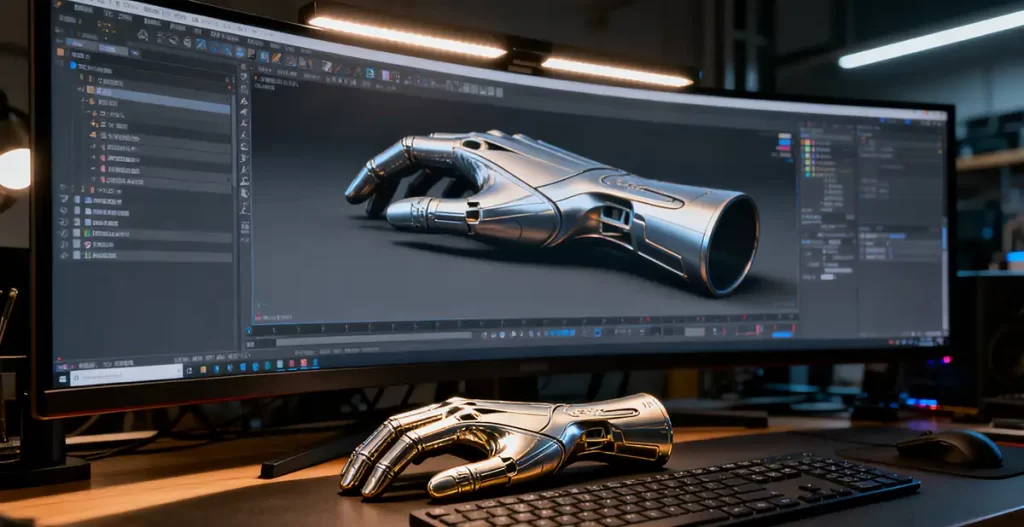
NEIDA: When design companies showcase industrial design cases to clients, it is not just a simple “showcase”, but a crucial strategic communication aimed at building trust, showcasing professionalism, and ultimately winning the project. The following are the core points to be noted in industrial design case presentations, which can be divided into three stages: pre presentation, in presentation, and post presentation.
1、 Before presentation: Carefully planned and prepared
- Deeply understand customers and accurately screen cases:
Reject the idea of “one PPT to conquer the world”: Before presenting, try to understand the industry, product type, and challenges faced by potential customers as much as possible (whether it is cost control, user experience improvement, or technology integration?).
Priority given to case relevance: Select cases that are most relevant to the customer’s industry, product complexity, or design challenges. Presenting a medical device case to a consumer electronics customer is far less persuasive than a successful smart hardware case.
Display diversity (optional): If the client’s background is unclear, you can prepare 2-3 representative cases from different fields, but be sure to point out the commonalities between each case and the client’s potential needs.
- Build a storyline instead of piling up pictures:
Each case is a story: adopting the classic “problem solution outcome” structure.
Background and Challenges: What market or technical difficulties did the client face at that time? The customer needs a headphone that can seamlessly switch between home and light office scenarios
Our design strategy: How do we think and define solutions? For example, we propose the core concept of ‘seamless switching’, which achieves wearing comfort and signal stability through XX structure. ”)
Design deepening process: display sketches, concept divergence, prototype models, user testing and other key nodes. This can demonstrate professionalism and rigor.
Final design proposal: Present high-quality product renderings, multi angle views, exploded views, and close ups of key details.
Results and impact: What value does the final product bring? It is best to have quantitative data, such as “30% increase in sales after launch” and “winning the Red Dot Design Award”. If the data is sensitive, it can describe positive market feedback.
- Strive for excellence in visual materials:
High quality visuals: using high-resolution images, professional rendering, and concise and clear video animations. Blurred or unprofessional visual materials can directly lower the company’s image.
Unified visual style: The layout, font, and color scheme of PPT or Keynote should reflect the company’s brand tone and maintain professionalism and consistency.
Solid model (prototype) display: If conditions permit, bring the solid model or final product with relevant cases. The tactile and physical texture cannot be replaced by pictures, which is highly persuasive.
- Clearly demonstrate the team and division of labor:
Pre determine the keynote speaker, technical support personnel, and project leader. The speaker needs to have good communication skills and infectiousness, and be able to vividly tell stories.
2、 In Display: Professional Communication and Interaction
- Customer centricity rather than self promotion:
Opening remarks are important: First, briefly introduce the company, but quickly get to the point: “Today we have specially selected three cases for you, and we believe they can illustrate how we can solve similar problems as you may encounter
Focus on “value” rather than “aesthetics”: Don’t just say “this shape is beautiful”, but explain “this streamlined design is to reduce wind resistance and improve energy efficiency” or “this CMF (color, material, process) selection is to create a high-end feel and differentiate from competitors”.
Emphasize process and methodology: Customers purchase your professional skills, not just the final image. Detailed explanations of user research, engineering feasibility analysis, supply chain integration, and other processes can establish a great sense of trust.
- Maintain interaction and guide customers to think:
Questioning and Listening: During the presentation, ask timely questions such as “Have you encountered similar supply chain issues during the development process?” This can involve customers and help you understand their pain points.
Observing customer feedback: Pay attention to the customer’s body language and facial expressions. If they are particularly interested in a certain aspect, they can stay for a while to explore it in depth.
Face challenges honestly: Don’t just talk about the side of success. It is possible to mention the difficulties encountered in the project and how they were solved, which appears real, credible, and demonstrates the ability to solve problems.
- Clearly explain the cooperation process:
After the case presentation, use a one page PPT to clearly explain the collaborative process of a typical project, such as: requirement communication → strategy research → conceptual design → detailed design → engineering support → production follow-up. This gives customers a clear expectation for future cooperation.
- Control time and highlight key points:
Strictly adhere to the appointment time. Carefully prepared content should be completed within the designated time, leaving ample time for customers to ask questions and discuss.
3、 After presentation: continuous follow-up and value extension
- Prepare a detailed case study package:
After the presentation, a beautiful electronic case collection (which can be in PDF or online link) should be prepared, containing the core content of the presentation, for easy internal circulation and decision-making by customers.
- Actively follow up and answer questions:
Send a thank-you email within 24 hours after the presentation and attach the information package. Provide supplementary answers to specific questions raised by clients during the meeting.
Proactively inquire about the next steps, but do not be too eager.
- Protecting confidential information:
For undisclosed client projects, it is essential to ensure that permission has been obtained from the relevant clients before they can be displayed. If necessary, desensitize sensitive information.
Summary: Common Misconceptions to Avoid
Misconception 1: Only focus on results, not process ->Correct approach: Show your thinking process and professional methodology.
Misconception 2: Cases are not related to customers ->Correct approach: Carefully screen and establish a connection between cases and customer needs.
Misconception 3: One way indoctrination, lack of interaction ->Correct approach: Turn the presentation into a dialogue.
Misconception 4: Overpackaging, appearing exaggerated ->Correct approach: professionalism, confidence, sincerity.
Misconception 5: Neglecting visual details ->Correct approach: Visual materials represent the quality of the company and must be constantly improved.
Ultimately, a successful case presentation is a communication of value propositions. It should make it clear to customers: “By choosing us, you will not only receive a beautiful design, but also a reliable partner who can solve practical problems, reduce risks, and enhance market competitiveness
@NINEIDEA九号创新 www.nineidea.com










